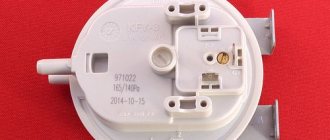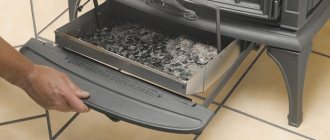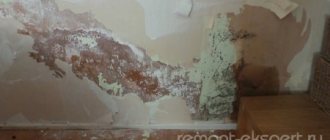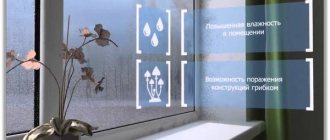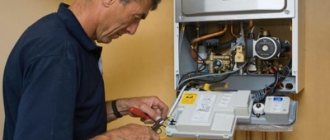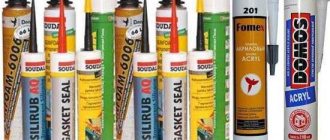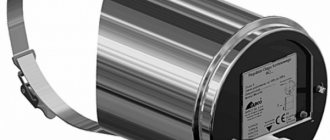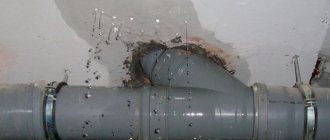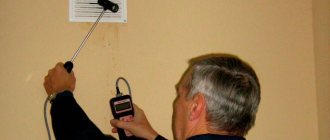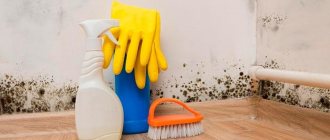Why does this effect occur?
Where does it come from and who is to blame? Well, the most common reason is an error in the design of the chimney. Further, no less popular “culprits” are debris in the chimney, strong air currents in the pipe, and even a certain influence of atmospheric phenomena.
Reason #1 - chimney design
First of all, the design of the chimney itself matters - if it is too high, the draft is always strong, and if it is low, it is often insufficient. The optimal length is just over 5 meters, then problems with traction rarely arise and certainly not due to the height of the pipe.
Also, the cross-sectional area of the chimney must correspond to the stove - if the cross-sectional dimensions are too small and at the same time with a powerful stove, a large volume of combustion products simply cannot escape normally, and sufficient draft is not created. Just like a disproportionately voluminous chimney will lead to the fact that all the heat, as people like to say, “will fly out into the chimney.” And in no case should the chimney have pipes of different diameters installed in different areas - there will be soot and problems with draft.
The uneven surface of the pipe also serves as a serious obstacle to the movement of smoke - any deposits reduce the diameter of the pipe, and it becomes more and more difficult to light the stove each time. The angles of inclination with the turns of the chimney also create their own difficulties - if soot constantly accumulates in the corners, it will also interfere with normal draft. To prevent this from happening, when designing, adhere to standard standards - bend 45°, turn 90°.
The shape of the smoke hole itself is also important: round is most favorable for good draft, but square and rectangular ones most often cause problems. So, in these corners, additional vortex occurs at the corners, which slightly impedes the overall flow and overall reduces the thrust.
By the way, the most common problem of poor draft is with metal chimneys. Their problem is that they heat up quickly, but also cool down quickly, and the cold air always sinks down. Good old brick chimneys are more reliable in this regard.
Reason #2 - poor ventilation
Also, the lack of ventilation in the room where the stove is heated can lead to such a misfortune. Also check for drafts – are they too strong? Such vortices right in the room can “confuse” the direction of the smoke, no matter how strange it may sound. By the way, intense air flows in baths often arise due to the stairs to the second floor. Keep an eye on this, and never open windows on the landing if it is much higher than the firebox level.
Also pay attention to ventilation if you have a gas water heater in the boiler room. It will still draw air out of the combustion room; over time, a serious lack of oxygen will form and critical air rarefaction will occur.
From time to time, a stream of air will rush through the chimney, the column will go out, and the room will become smoky. Is this exactly your situation? Are sealed plastic windows still available? Address the issue of ventilation urgently.
Eliminating the causes of backdraft
Poor chimney draft requires immediate elimination of this problem, which is why many people often resort to using a special regulator. With its help, it is easy to control the flow level, as well as create it if necessary. The automatic chimney draft regulator is produced in several variations. This could be a chimney stabilizer or a ventilation stabilizer.
Of course, the chimney device is aimed at regulating air flows. At the same time, it is characterized by increased economy, which is good news. In addition, savings are achieved by controlling fuel consumption. Such a device guarantees the smooth functioning of the chimney, and therefore the appearance of combustion products in the room will be impossible.
The ventilation stabilizer provides the room and the furnace with the necessary air exchange. The stabilizer is produced in the form of an aerodynamic design, and has two types of installation - at home or on the street as a free-standing device. Thanks to the use of this device, the appearance of any odors or unpleasant blows will be eliminated in the room.
This device also helps reduce the development of mold and other harmful fungi. It is extremely convenient to use in combination with a chimney stabilizer. In addition to these devices, checking the draft in the chimney will reveal the reasons for its absence, after eliminating which the pipe’s performance will be at its best again.
How to increase traction in an already installed channel
The above calculations make it possible to build a chimney with optimal parameters to obtain a normal level of natural draft. What to do if there is backdraft? Is it possible to increase the indicator and how to increase traction on your own? There are several ways:
- cleaning the smoke exhaust duct. When soot and other types of deposits settle, the working diameter of the pipe decreases significantly, which leads to a decrease in traction. You can clean it:
Using a pipe cleaner to clean a chimney
special means such as a “Chimney Sweep” log;
Special soot remover
When using special products, you must strictly follow the instructions provided on the product packaging or special insert.
folk remedies. For example, raw potato peels, aspen firewood, and so on;
- elimination of design defects made during the construction of the pipe (elimination of cracks, lengthening or shortening, elimination of unnecessary bends, insulation, and so on);
- installation of additional equipment.
The following can be used as additional equipment to enhance traction:
regulator The device is installed on the pipe and by opening/closing the damper allows you to regulate the draft force in the heating system;
Traction control device
deflector-amplifier. The increase in thrust occurs due to the redirection of air flows formed due to an increase in the diameter of the device;
Air flow redirection device
vane. The draft stabilizer, like the deflector, is installed at the end of the chimney and serves to enhance draft due to the streamlining of air flows. In addition, the weather vane helps stabilize the draft level during strong gusts of wind;
Traction stabilizer
rotary turbine. When exposed to wind, the device begins to rotate, creating an area of low pressure around itself, which increases traction.
Wind traction booster
Unlike other devices, a rotary turbine performs its functions exclusively in the presence of wind. In addition, the device does not protect the chimney from clogging with leaves, small birds and other pollutants.
All additional devices require periodic maintenance: cleaning in the warm season and clearing of ice in winter. If cleaning is not carried out in a timely manner, the performance of the device will be reduced to a minimum and the required effect will not be achieved.
Traction stabilizer
If the previous actions did not lead to a positive result, then it is possible that a special device will help - a draft stabilizer in the chimney. In fact, this is not one device, but a whole series of devices, and we’ll talk about them in more detail.
The first device is a deflector. It is very common and you have probably seen it:
It deflects the flow of air rising upward, forcing these flows to bypass artificial obstacles. When air flows around them, the pressure decreases, which, in fact, is what we need. The pressure difference is one of the most important factors in the occurrence of traction, and we talked about this above.
The second device is a traction stabilizer. It looks a lot like an umbrella. Below we provide a drawing of it, according to which you can make it yourself:
The meaning and principle of operation is approximately the same as that of the deflector, shown in the presented figure. The most complex of the devices is the rotary turbine:
It is installed above the chimney and rotates all the time in one direction, creating a rarefied atmosphere in the upper part of the chimney (again a decrease in pressure). It rotates from the wind, so when there is no wind, it becomes useless. Also, during rotation, precipitation and various debris can get into it, so this device is not particularly widespread.
Useful information about chimney draft
All residents of country or private city houses are familiar with the concept of chimney draft. Do they know the essence of this term?
If we move a little away from the dry scientific terminology, then draft can be defined as a natural phenomenon in which air moves from one area to another, namely, from an air zone with high pressure to a zone with low pressure. All this happens with the help of a ventilation device - a special channel in the chimney.
Using this process of aerodynamics, humanity began to use fireplaces, stoves, boilers, heating their homes using different types of fuel - coal, firewood, peat, etc.
The Furanflex company produces material for restoring chimneys of stoves and fireplaces. The material can be used to repair chimneys of any type and complexity. Fast installation and high-quality installation. Warranty from 10 to 30 years.
With good draft, the stove lights up quickly and the room is filled with pleasant warmth.
The following depends on a properly designed and constructed chimney and, accordingly, on good draft:
- quality of room heating;
- reduction in fuel costs;
- safety in buildings with their own heating.
In-house moments
A number of factors indoors can significantly influence the presence/absence of draft and its strength:
- The material from which the building is constructed.
- Average room temperature.
- The maximum volume of air space in the home.
- The number of people permanently staying inside the dwelling.
- The presence of internal sources that additionally consume oxygen (heaters, heaters, stoves, etc.).
- Regular supply of fresh air (airing, ventilation).
External factors
There are other factors that determine the chimney draft, and they are located outside the heated room. We are talking about external temperature, atmospheric pressure, humidity, wind direction. A phenomenon such as changing temperatures during the day can also affect draft - due to the movement of cold and warm layers of air.
Difficulties with traction appear for various reasons, some may simply not be noticed. For example, problems with air outlet through the chimney may arise if the pipe is located much lower than the ridge of the building or tall nearby trees.
Chimney design features
The draft may vary depending on the design characteristics of the chimney:
- height;
- presence of insulation;
- tightness;
- location (internal/external);
- length;
- presence/absence of irregularities or roughness, etc.
It is necessary and possible to control the draft in a room using the “levers” of the first and third factors (intra-house and design). Natural changes, of course, do not depend on humans.
Keeping the draft in the chimney under control is a prerequisite for safe and comfortable living in your own premises. If the draft is very weak, then it is almost impossible to light the stove and heat the home.
With reverse draft, the gases generated as a result of combustion are “thrown” into the living space, and not into the air through the pipe. This is very dangerous for human health and life!
It is impossible not to notice this atypical behavior of smoke
With very strong draft, all the heat is rapidly drawn out through the chimney channels, without having time to warm the heated room to the desired temperature.
How to increase the draft through the boiler, what to use - a deflector, a smoke exhauster or...
Sometimes there is not enough draft through the chimney, the fuel does not want to burn intensely, the wind blows in, smoke is released into the room when the damper doors are opened - why does this happen, and what needs to be done to improve the draft - maybe install a smoke exhauster?
Why is there no traction?
Natural draft depends on the pressure difference in the chimney. And the pressure depends to a large extent on the difference in temperature of the air and gases, or more precisely on the difference in their densities... In winter, when it is frosty outside and warm inside, the air flows well into any raised chimney, the boiler melts without problems. When the firebox is hot and the frost is still good, the draft is usually tolerable even in the most poorly designed systems. In the off-season, traction is also usually satisfactory.
But in the heat of summer, it can be problematic to light a stove or a regular boiler using natural draft. The initial thrust may be completely reversed. The room is filled with smoke, stable combustion is not achieved - what to do?
Also, natural cravings can be significantly affected for the following reasons.
- The chimney is covered in soot and coked.
- Other chimney ceilings - collapsed plaster, compression by structures, bulging and lifting of rusted, burnt shells...
- A hole has formed in the chimney - a leak in addition to the boiler firebox.
- A low chimney was installed - below that required by SNiP.
- A chimney with a small cross-section is installed - smaller than that specified according to the instructions for the boiler, for a given combustion power - the aerodynamic resistance is too high.
- A boiler and stove were installed with too much aerodynamic resistance inside, with a complex system of smoke ducts around the heat exchanger.
- Air supply dampers, blower covers, etc. are closed.
- The draft regulator is closed, the damper at the gas outlet, at the point where the chimney is connected to the equipment, is blocked.
- There is no free flow of air into the room, it is hermetically sealed, during combustion a vacuum is created in the firebox, and the draft stops.
As you can see, if the draft is broken, then you first need to check the serviceability of the equipment, the correct air supply adjustments, the position of the dampers, and be sure to clean the soot from the chimney. How to clean a chimney - recommendations
- But for many people it is important: - how to light a boiler in the summer, for example, to heat water...
- Also, many people are aware of the “diseases” of their boiler-chimney system, but there is a desire to increase the draft on existing equipment - how to do it?
Installing a deflector - helps increase traction
A deflector is a device at the top of the chimney that creates additional vacuum in it due to the force of the wind. Disadvantages of this method of increasing traction:
- If there is no wind, then there is no increase in traction - too obvious a drawback.
- Another hard-to-reach unit appears that needs to be cleaned of soot, which has the opposite effect when dirty, inhibiting traction.
- The method also has a slight increase in draft - only 20 - 25%, provided there is wind on high chimneys.
Is it worth doing this or is it enough to install a regular rain umbrella? In addition, the instability of the traction force is not the best situation, then we will look at why...
However, you can make a deflector yourself from stainless steel, according to the drawings provided.
How to make a TsAGI deflector - manufacturing diagram.
How to make a cone for a deflector
Making a deflector on video.
Drawings for the manufacture of a Volpert-Grigorovich deflector.
Install a smoke exhauster to increase draft
There are electric ventilation units to increase draft in chimneys. Large boiler houses are equipped with them according to the designs initially. For boilers, such equipment can be additionally installed on standard pipe diameters.
- There are draft enhancers installed at the end of the chimney in the form of a propeller fan. But the option is unpopular due to the complexity of installation at height and subsequent cleaning there, especially if resinous firewood is used.
- Another version of the smoke exhauster is a centrifugal type, installed at the outlet of the boiler in the hot gas zone. Usually a separate chimney bypass is made for it, blocked by a damper, so that during natural draft the gases do not flow through the fan.
During operation, this device creates a powerful fixed draft that will blow through virtually any system, provided there is free air access to the firebox (into the room), and will not pay attention to wind blowing, for example... But this system has very significant disadvantages.
Disadvantages of installing a smoke exhauster.
- During operation, a stable draft is generated and a large amount of fuel is burned. If there is an emergency power outage, the draft disappears, then a large amount of carbon monoxide can be released into the room. This is extremely dangerous. Such a smoke exhauster must work in conjunction with automation with other boiler room devices, or for a short time under constant human control.
- The impeller gets dirty too quickly and needs regular cleaning, so its use is not practical.
- Obstacles are created to the implementation of slow, long-term combustion.
Ways to increase traction
If the chimney creates insufficient draft, it is necessary to replace it, install sandwich pipes selected in diameter for the given power of the heating equipment (according to the instructions, according to tables), and height in accordance with the requirements of SNiP (half a meter above the ridge when placing the pipe near it... etc. .).
If you need summer fireboxes, you can equip the boiler with a centrifugal smoke exhauster for reliable infrequent starts under the control of a responsible person in hot weather. But there is a simpler solution...
How to light a boiler in summer or a stove after a long break? - a popular method is to stick a vacuum cleaner blowing into the blower, or put any other fan on blower for a couple of minutes until it flares up... - watch the video
Chimney design
When using various heating devices - geysers, water heaters or fireplaces - smoke exhaust systems are installed. The heating device and the chimney pipe are a single structure, during the installation of which special norms and rules are observed to ensure uninterrupted and safe operation of the system; it must meet the following requirements:
- withstand high temperatures;
- be resistant to moisture resulting from the condensation process;
- do not deteriorate under the influence of aggressive chemicals;
- have the traction necessary for safe work.
The cross-section of the pipe, the height of the structure, and the material of manufacture depend on the type of heating device. In addition to the main parts of the structure, special devices are installed to enhance draft in the air duct: dampers, deflectors, stabilizers, etc.
Methods of regulation
Turbine to increase draft in the chimney
Setting a normal draft level ensures high efficiency of the heating structure of a house or bathhouse. This also increases fire safety and prevents the possibility of poisoning by combustion products. Several methods are used for this:
- installation of stabilizer;
- increasing the length of the pipe;
- installation of rotary turbines.
Stabilizer installation
The device is installed on the chimney. At the bottom of the device there is a special hole that ensures unhindered circulation of gases to control the air level in the chimney.
Together with the stabilizer, a sensor is installed to monitor the temperature of the exhaust combustion products. The alarm system is triggered when the pipe is heated by gases during a decrease in draft.
Increasing the length of the chimney
When arranging a chimney, the diameter of the pipe and its length play a role.
When using the method, you must follow a number of rules provided for the normal operation of the heating system.
- The height of the chimney is at least 5 meters. Optimally - more than 6 meters in a two-story building and an extension of 4 meters for each floor.
- The chimney is located above the ventilation duct. This will prevent carbon monoxide from entering the room.
- The height of the chimney part above the roof of the building is at least 50 centimeters.
- It is recommended to entrust the pipe cross-section to a specialist who will do everything in accordance with established standards. Otherwise, the draft may disappear, after which the oven will cease to perform its function.
When installing a chimney, it is worth considering that inclined and horizontal sections have a negative impact on gas flows. To solve the problem, you need to lengthen the chimney pipe.
Using a Rotary Tube
Turbines above the heads of chimney pipes enhance the processes of removing combustion products by discharging smoke. In addition, the device protects the chimney from all kinds of debris and meteorological precipitation.
Why does reverse draft occur?
Weak thrust can become the basis for the formation of reverse thrust. How can you recognize that all is not well with cravings?
This is “spoken” by moments that can be seen with the naked eye: a lot of smoke in the stove, soot on the door, incoming smoke movement inside the house. In other words, smoke and fumes from the burning fuel do not go into the chimney through the chimney, but tend to enter the living space when the door is open and through cracks.
Causes of backdraft:
- Design flaws of the chimney. A low pipe means an increased risk of reverse draft. The higher the pipe, the better the process of extracting exhaust gases and smoke. The optimal pipe height is about five meters.
- Correspondence of the pipe diameter to the parameters of the furnace device. A powerful stove requires a chimney with a pipe of rather large cross-section. But the measure here is very important, because using a pipe that is too wide will make the combustion process unprofitable (all the warm air will literally fly into the pipe). It is unacceptable to use several pipes with different cross-sections in the chimney!
- Use of non-smooth pipes. Unevenness, chips, roughness, etc. are an obstacle to good traction. Over time, the chimney opening may narrow due to soot deposits and other combustion elements and complicate the process of lighting the stove and its normal functioning.
- Poor/lack of ventilation. Drafts and open windows in rooms located above the firebox do not help the fuel combustion process, but distort it, making it useless and unsafe.
Chimney channels made of metal are in many ways inferior to brick pipes. Rapid heating and equally rapid cooling are not good for the heating system in general and the chimney in particular.
Brick pipes are much more effective in terms of smoke extraction
Reverse thrust can also appear for objective reasons beyond a person’s control. Strong gusts of wind, rainy, cloudy weather with high humidity are unfavorable moments in terms of the formation of problems with traction.
There is such a term as temporary backdraft. What is this? In this case, it is worth talking about temporary traction disorders, lasting for several days. After a certain period, cravings return to normal.
Temporary reverse draft can occur due to a cold room that has been unheated for a long time. Very cold air accumulated in the chimney pipe prevents the fuel from burning quickly. Therefore, smoke can be “pushed” out of the chimney into a home, bathhouse or other room with a stove or fireplace.
It is very easy to eliminate cold air in the chimney - warm up the pipes by burning ordinary newspapers, wallpaper, and paper in the oven. The main thing is that these materials are well dried.
If problems with traction can be detected constantly or with a certain frequency, then it is necessary to take measures to eliminate bad traction.
Reasons why the stove smokes in the bathhouse
There are several factors that affect the operation of the furnace:
- installation;
- condition of the chimney and roof;
- condition of the blower;
- condition of the subfloor and stove.
The condition of the roof and chimney has a huge impact on the operation of heating equipment.
- Roofing damage. The draft depends on the integrity of the roof. If it is damaged, this may affect the operation of the heating equipment of the bathhouse.
- Soot getting into the chimney. In some cases, the draft disappears completely and abruptly. This can happen due to a large amount of soot getting into the chimney. It is logical that to correct the situation it needs to be cleaned. To prevent such a situation, it is better to make the chimney straight, without elbows, which will even facilitate the process of cleaning this channel. For cleaning, you can use a brush tied to a rope with a weight.
- Chimney overcooling. If the stove has not been used for a long time, you need to put a rag with kerosene in it and set it on fire. Thanks to this, the pipe will warm up very quickly and the stove will work properly.
- Incorrect chimney height. In accordance with the requirements, the chimney must be mounted at an angle not near the ridge. If this simple rule is not followed, the air will remain in the form of unpleasant soot.
- Chimney deformation. If a poor solution was used when installing the stove and the chimney itself or the work was performed by a non-professional, the thickness of the seams may be compromised and the lining may be missing. As a result of such errors, deformation of the chimney occurs and, as a result, smoke builds up in the interior of the room. The solution is to rework the heating system.
- Indirect chimney. If it is placed indirectly, the stove draft will be poor, which can cause smoke.
- No protective cap. Sometimes you may notice that the stove in the bathhouse smokes only in windy weather. This usually indicates that there is no protective cap on the pipe, causing the wind to quickly blow out the fire.
It is impossible not to take into account the condition of the blower. This is the name of the hole in the stove below the firebox, which serves precisely to improve draft.
- A large blower. If its dimensions exceed the norm, the air will not be able to escape. It will be repelled from the stove wall and penetrate into the bathhouse. In order to solve the problem, you should make the blower smaller.
- A large amount of soot. The vent may become clogged with soot. If the sauna is used frequently, the vent should be cleaned at least once every six months.
Some do not take into account that the reason why the stove in the bathhouse smokes may lie in the condition of the underground and the stove itself
Thrust calculation
So, draft calculation is the calculation of the cross-section of a chimney for a gas boiler, fireplace, stove or other heating equipment. How to calculate the cross section? To do this you need to define:
- the volume of gas that will pass through the chimney in 1 hour;
- cross-sectional area of the chimney;
- section diameter.
Calculation of gas volume
To calculate the volume of gas passing through the smoke channel, the following formula is used:
V = B x V1 x (1 + T/273) /3600, where
B – mass of fuel burned per 1 hour of operation of heating equipment;
V1 – correction factor, which depends on the type of fuel used for heating;
T – gas temperature determined at the exit from the chimney.
Indicators V1 and T can be obtained from the table available in GOST 2127 - 47.
Table from GOST for determining calculation parameters
Calculation of cross-sectional area
After determining the volume of gases passing through the smoke channel, you can calculate the cross-sectional size of the pipe:
S = V/W, where
V – volume calculated earlier;
W is the speed of passage of gases through the smoke channel (this value is constant and equal to 2 m/s).
Diameter determination
The next step is to directly determine the diameter of the chimney. The following formula is used for this:
D = √4 * S/ π, where
S – cross-sectional area of the smoke exhaust channel;
π is a constant equal to 3.14.
Example
For example, let’s carry out the calculation using the specified formulas with the following parameters:
- 10 kg of wood is burned every hour in the stove installed in the bathhouse;
- the temperature of the gases at the outlet of the pipe is 130ºС.
Let's calculate the volume of gases:
V = 10x10x(1+130/273)/3600 = 0.041 (m³/hour)
Let's determine the cross-section of the smoke exhaust pipe:
S = 0.041/02 = 0.0205 (m²)
Let's find the most suitable pipe diameter according to the given parameters:
D = √ 4 * 0.0205 / 3.14 = 0.162 (m)
This means that for the stove used in the example, it is enough to install a chimney with a diameter of 165 - 170 mm.
How to make calculations and install a chimney yourself, watch the video.
Strength check
Before you try to fight bad traction, make sure that your traction really leaves something to be desired.
You can check the traction using special devices or yourself. Simple ways to fix traction:
- Light a piece of paper and let it burn for a while. When you bring it to the stove or fireplace, extinguish the paper and observe the direction of the smoke. If it is directed towards the pipe - good thrust, deviates in the opposite direction - reverse thrust, if it remains “straightforward” - there is no thrust. Similar manipulations can be done with thin tissue or toilet paper without setting it on fire.
- If there are smokers in the house, then follow the direction of the cigarette smoke or the flame of a match or lighter near the fireplace or stove. Draw conclusions similar to the first point.
- The flame of an ordinary candle can also help in determining the draft in the home.
- A pocket mirror brought to the firebox and covered with condensation may indicate problems with removing smoke from the stove.
- The presence of too much draft, which carries away useful heat from the room, is indicated by an audible hum in the stove - a loud hum.
- The color of the fire in the firebox can be an indicator of different drafts. A golden hue means good draft, white flame means excessive draft, red color and black smoke means poor draft, high probability of reverse draft.
A regular lighter can help test traction
An anemometer is a device familiar to many people of the Soviet period. Using this device it was possible to measure the draft of the chimney. Readings within 10–20 Pa were considered normal. The disadvantages of the device are its low accuracy when the wind force is less than one meter per second.
This simple device will help protect your life in a stove-heated home.
Modern industry offers a sufficient number of devices for measuring draft; there are devices that record draft at the inlet and outlet of the chimney.
Causes of poor traction
First you need to figure out why there is poor draft in the furnace. Problems can arise from the very beginning and during operation. Below are the most common reasons
:
- Clogging of the channel (with soot on the walls or all sorts of debris that has fallen from the street).
- Errors at the construction stage (a large number of bends and horizontal sections entail an increase in pressure losses along the length of the channel; in addition, the pipe must be of the same diameter along the entire length for uniform speed, which determines the formation of soot stagnation).
- Leakage of pipeline joints (this can occur both during the construction stage and over time, so it is necessary to periodically check the quality of the channel).
- Wind backlash (often it is because of the wind that a temporary overturning of the draft occurs, so it is advisable to very carefully choose the installation location of the chimney pipe).
- Incorrectly selected channel diameter relative to the stove power.
- Lack of supply air.
Reasons for backdraft
To control the cleanliness of the smoke channel, on the vertical part of the pipe from below you can mount a piece of pipe with a plug, removing it periodically to get rid of most of the accumulated debris.
Chimney design
The location of the chimney on the roof of the building is very important for the correct operation of the stove. Earlier in the article it was already mentioned that the height of the chimney should be at least 500 mm
But these are only general guidelines regarding a flat roof; in fact, the height of the chimney depends on the distance to the ridge and tall nearby buildings. Below are a few main rules for chimney height:
- If the distance to the ridge of the building is less than 1.5 meters, the height of the chimney must also be at least 0.5 meters.
- If the chimney is located at a distance of 1.5 to 3 meters from the ridge, it is made no lower than the ridge, regardless of height.
- If the chimney is located more than three meters from the ridge, then it should be no lower than a line drawn from the ridge at an angle of 10 degrees to the horizon.
- If taller buildings are attached, the pipe must be installed above them.
- If there are exhaust ducts near the chimneys, the height of the hood should be no less than the height of these pipes.
Chimney installation option
Ventilation failure
It is worth dwelling on ventilation in more detail. While most people know or guess about other problems, they usually forget about ventilation. Often problems arise due to the second floor in the bathhouse, for example, when the release of combustion products is located too close to the second floor windows. Colliding air currents create excess pressure, which interferes with normal draft.
Ventilation ducts in the chimney
Ventilation in the boiler room itself is often forgotten. Nowadays there are plastic windows everywhere, which are very sealed and do not allow outside air to pass through at all. If they are closed and there are no supply openings, then when the stove burns, after a certain period of time a critical vacuum will arise in the room, and small streams of air will periodically rush through the pipe. This phenomenon is extremely unpleasant and care should be taken to ensure sufficient ventilation in advance. In some cases, natural ventilation is not enough and it is necessary to install a fan, because with mechanical stimulation, air exchange is more active and there will be no shortage of oxygen.
External factors
If you do not use the stove for a long time (for example, in the summer), birds may make nests in the chimney or hornets may build a hive.
This phenomenon is very common, so it is important to check the chimney every time before the start of the heating season. When visually inspecting the inside of the chimney, you can also detect a large amount of adhering soot, which creates additional resistance
Unfortunately, chimney ducts do not last forever, and over time they can collapse, which also needs to be periodically monitored.
Checking and cleaning chimney ducts
Often the cause of deterioration in traction is changed weather conditions, such as fog, rain or sharp gusts of wind. The swirling air flow near the chimney outlet creates additional resistance. Such phenomena not only impair traction, but can also cause it to tip over.
Top reasons for lack of traction
It is necessary to determine the time frame for the occurrence of the malfunction. Separately, it is worth considering cases when the chimney is new and during a test run the fact of reverse draft is revealed. Let us consider the reasons separately and in detail.
Reason 1. Incorrect chimney.
Proper chimney design is important for good air movement. If there is no draft when checking a new heating structure, then the reason is one or a combination of errors:
- The pipe diameter is too small and does not correspond to the installed capacity of the heating system being served.
- The chimney design has 90 degree turns. The maximum allowable rotation angle is 45 degrees. For ideal operation, the entire chimney must be extended along a strict vertical axis. However, such a design is not always possible; then tees and reducers are used. For a 90 degree rotation angle in the chimney, it is necessary to add 1 meter of pipe length. For a rotation angle of 45 degrees you need to add 0.5 meters.
- The presence of horizontal sections of the chimney. The total length of horizontal sections should not exceed 1 meter.
- Irregular pipe shape. The pipe must have a round cross-section. In the corners of the square pipe, a turbulence of the air flow occurs, which clogs the chimney. Square sections have chimneys made of brick; for their normal functioning, stainless steel pipes must be installed inside. Stainless steel pipes are easy to install, airtight, and their smooth surface prevents the accumulation of soot.
- The blower is not long enough, which does not provide the required oxygen flow.
- The chimney consists of pipes of different diameters; in places where there is a difference in size, favorable conditions are created for the accumulation of soot and soot.
- Insufficient tightness of pipe joints.
- No cap over the chimney. The cap protects against exposure to precipitation and objects that can clog the chimney (snow, dead birds).
- Incorrect pipe placement. The pipe should rise above the flat roof by at least 0.5 meters. The distance between the ridge and the pipe should be 1 meter. The total length of the sleeves must be at least 5 meters.
- Insufficient chimney insulation. The part of the pipe located outside the heated room must undergo insulation. Insulation will prevent gases from settling in the form of condensation on the inner surface of the pipe.
Reason 2. Ventilation
For proper operation of the heating system, proper ventilation must be established in rooms with approved combustion equipment. Often because of this there is no draft in the chimney. Reasons for lack of sufficient traction:
- Constantly open windows in the furnace room. Especially when the windows are located above the firebox.
- A strong draft, aerodynamic forces can change the direction of air movement.
- Insufficient fresh air required for combustion.
Reason 3. Exposure to natural factors.
The reasons for the lack of chimney draft can be:
- Rain, snow, hail, creating a pressure difference. Exposure to high street pressure leads to combustion products settling in the chimney, reducing the useful volume of the chimney.
- The crown of a tree obstructs free access to air masses.
- A tall building nearby reflects the smoke coming out of the chimney.
- Using raw wood as a raw material.
- The canopy is too low above the pipe.
External factors
Why is there poor draft in the stove if it is built correctly and the chimneys have recently been cleaned? In addition to the above reasons, stove draft depends on external environmental factors and weather.
The most common of them:
- improper ventilation in the house,
- fluctuations in temperature and humidity outside,
- wind and other climatic factors.
Let us consider in more detail what we have to do in these cases.
Ventilation failure
The influx of fresh air helps to establish the required pressure difference in the stove and chimney. If the house is cold and the stove has not been fired for a long time, this difference is minimal. And the lack of air in the combustion room can create a temporary vacuum in the room and provoke reverse draft. On the other hand, excessive drafts are also unfavorable, since vortex air flows can disrupt the air flow into the firebox and disrupt proper draft.
This is often observed in the summer, and also if the windows are located above the firebox level, in this case it will be easier for the hot air to change direction towards the exhaust through the window. You need to be especially careful with gas stoves; there is a danger of not only changing the direction of draft, but also extinguishing the burner and filling the room with gas.
Before the first attempts to light the stove, it is necessary to check not only the draft in the firebox, but also the air movement in the room, and when using the stove, constantly monitor the ventilation. This is also necessary to prevent carbon monoxide poisoning.
Strong wind
Gusts of strong wind may temporarily prevent smoke from escaping from the chimney. With such a disruption of the flow of hot gas, the thrust may work in the opposite direction. This happens more often with chimneys connected directly to the firebox without passing through heating wells.
The situation in the wind is also worsened by the horizontal location of the pipe exit, which is often used in the utility rooms of the lower floors of the house (exit through the wall).
Protection from the prevailing winds in a given area is provided with the help of pipe caps, “smoke chambers” or “wind vanes”. They also prevent getting wet during rain and snow. The humidity of the outside air is another obstacle to good traction.
Installing a chimney will solve the problem
High humidity
This factor is indirect, but no less unpleasant. High humidity in the external air can form due to low atmospheric pressure, which already reduces draft. The increased density of the humid surrounding atmosphere reduces rarefaction and impairs the movement of smoke.
It is easy to notice that during rain and snow, smoke reluctantly comes out of the chimney, spreads along the roof, and with every gust of wind escapes through the stove door into the room. And vice versa, in clear dry weather the draft is excellent and the smoke rises to the sky. Finally, with high humidity in winter, a dense coating of frost forms in the pipe, which sharply reduces the cross-section and prevents the normal release of gases.
In this situation, you will have to clean the chimney frequently.
Solving the backdraft problem
Now you need to check the traction. You can use a special device that measures the speed of air flow - an anemometer. Often there is no such device, then you can use traditional methods, for example, bring a burning match or a sheet of paper and see the direction of air movement. In addition, the quality of draft can be determined by the color of the flame in the furnace
:
- white or very light color is a sign of insufficient traction;
- if the flame is even golden in color, the draft is normal;
- dark shades of orange color are not enough.
A golden flame in the stove is an indicator of normal draft.
If the stove is located inside the house, the draft will be better than if it is located near an external wall.
Basic ways to solve traction problems
:
- Improving the quality of the chimney
.First of all, to improve chimney draft. To do this, it is necessary to check the entire channel for soot adhesion and leaking joints. Everything needs to be cleaned and fixed. If this does not help, move on to the next method.
- Installing a deflector at the end of a pipe
.The method is good when the air flows around the pipe are constant and strong. The deflector greatly increases traction, however, without wind the deflector is useless. In some cases, it can even reduce draft due to the creation of additional resistance to the movement of air from the channel.
- Increasing the length of the chimney
.A simple and fast solution. The main thing is the correct calculation of the location of the channel relative to the ridge of the building, as well as an analysis of the likelihood of air flows occurring at the installation site. After all, even a 10-meter long chimney installed in the wrong place will not solve the problem.
- Installation of the draft regulator
.The device compensates for the lack or excess of internal pressure in the channel relative to the external one. The regulator allows you to maintain the optimal temperature in the furnace by controlling the air supply to the firebox. With it, the air flow speed is constant, which means the thrust is stable and does not depend on external factors (wind, pressure changes, etc.).
Types of chimney deflectors
Another important concept is reverse draft. It occurs when the resistance in the chimneys is too high (due to the proximity of the ridge of the building, nearby tall buildings, etc.)
In this case, the air from the fire follows the path of least resistance, that is, into the room, that is, the draft we need disappears completely. There is also the term “thrust rollover” - moving air changes its direction only for a certain time. The first signs of a possibly imminent draft failure are the formation of a large amount of smoke during combustion, which rushes into the room when the stove is opened. This means that traction has worsened, which means it may even reverse.
The methods for eliminating backdraft are the same as for improving traction. In fact, backdraft is the extreme and most unpleasant degree of bad draft; smoke in the room is unpleasant and even dangerous. Therefore, in a critical case, it makes sense to turn to specialists. They will quickly analyze all the factors and fix the problem.
The safety and efficiency of stove heating depends on sufficient draft in the chimney. When the first even minor problems are detected, it is necessary to conduct a full check of the system to identify the causes of the problems and find ways to increase traction. Most of the repair and restoration work can be done with your own hands, but if you don’t have confidence in your abilities, you need to invite a specialist.
Video on the topic:
Backdraft Detection
To denote the reverse movement of air flows (not through the chimney, but back into the room), there is a term - overturning the draft. The name speaks for itself: the flow of gases from burning fuel tends back into the room, and not out. There are many videos about this on the Internet with detailed descriptions.
Before each start of heating devices, it is recommended to determine the strength and direction of draft with the ventilation devices turned off (if any are installed).
Traditional methods
- We’ll talk about the factors and reasons below, but now let’s figure out what needs to be done in order to identify the very fact of the thrust overturning:
- if the firebox has a glass door (for example, such an element is found quite often in fireplaces), you can clearly see through the glass how quickly it smokes. One has only to open the door slightly, and a cloud of smoke immediately rushes out, that is, into the room;
- It is enough to attach a sheet of thin paper to the opening of the open firebox and see in which direction it deviates. A smoking cigarette instead of a piece of paper will show the same thing.
Professional methods
There is measuring equipment that allows you to measure the draft in the chimney with maximum accuracy, in pressure units. Indicators within 10-20 Pa are considered normal.
- Measurements are made using a two-way method:
- at the top of the chimney;
- at its base.
However, this technique is hardly relevant for a private home - most people make do with traditional visual methods.
The anemometer does not provide objective information at wind speeds below 1 m/sec. That is, in calm weather there is no point in using such a device.
Visual cues
- If the ratio of combustion and draft processes is normal, then:
- the flame is yellow with a golden tint;
- smoke appears and immediately evaporates into the chimney channel - without jerking, smoothly and at the same time energetically.
A situation where the normal thrust is too high is not good, because the fuel will burn out too quickly. Excessive draft will be indicated by the white color of the flame and the roar in the chimney.
How to check
A problem with the chimney needs to be addressed as soon as the first signs appear. For those who do not know how to check the draft in a chimney, several methods can be suggested:
- Take a piece of thin paper that easily reacts to air movement and light it by bringing it to the heater. If paper, flames or smoke fluctuate in the direction of the room, then this is a sign of problems with the chimney.
- Cigarette smoke is a particularly sensitive way of determining the direction of air movement, even with weak backdraft.
- You need to watch the fire in the firebox. If the flame has a white hue and a hum is heard in the chimney, then the draft is excessive, and when the fire has a golden hue, then the fuel combustion conditions are normal.
There are modern electronic devices for measuring chimney parameters, which are called anemometers and are available to any user.
Backdraft in the chimney
Watch this video on YouTube
Methods for measuring thrust
Lack of draft or poor smoke removal can lead to carbon monoxide poisoning of the residents of the house.
The main device for taking measurements in chimney pipes is an anemometer. It has been used until recently due to its ability to obtain accurate results with average smoke flow rates above 1 meter per second.
Nowadays more accurate devices are used for measurements. They are used by professional chimney sweeps and allow you to determine why there is no draft in the stove at home.
Checking the draft in a chimney pipe without using special instruments is possible using thin paper. To do this, a piece of paper is placed in a pipe and its vibrations are observed. Movements in different directions indicate the absence of disturbances in the removal of combustion products.
You can also use a lit match. In addition to the direction of the flame, you need to evaluate its color:
- A yellowish-golden hue is a normal level of craving.
- Dark red flashes indicate a violation of smoke removal.
- A flame with a pure white tint along with a noise in the chimney indicates a strong draft.
When lighting the stove, the smoke flow can be directed into the bathhouse or home room. This indicates the presence of reverse thrust. The heating system should not be started until the problem is resolved, as it will smoke into the room.
Reason for boiler failure in windy weather
In city apartments, boilers equipped with a coaxial air duct are installed. Thanks to this, even strong wind does not get inside and cause the burner to blow out. However, in a private home, a situation often arises when a gas boiler blows out with a strong gust of wind. Why does a gas boiler blow out when there is wind? This occurs due to improper ventilation devices and inconsistencies in the technological parameters of the chimney. Such malfunctions should only be repaired by heating technicians.
In addition, the extinction of the burner flame occurs due to the design features of the entire heating system or as a result of the influence of third-party factors.
In most cases, the reason for the burner flame to go out is the following: the air mass coming from outside exerts excessive pressure, as a result of which the check valve is triggered and becomes closed. The automatic boiler system reacts to this valve position and the gas supply to the firebox stops. Frequent repetition of this situation is the result of improper chimney design. So what to do if the boiler blows out through the chimney.
Particular attention should be paid to the height of this element: normal functioning of ventilation is ensured if the upper part of the chimney is located half a meter above the extreme point of the roof of the house. To determine the diameter of the air duct, special calculations should be used taking into account the parameters of the boiler equipment.
Selection of devices for regulation
Let's consider some characteristic features and methods of using devices for monitoring and adjusting traction.
Deflectors
Such structures are installed on the chimney (at its very top) to create obstacles to air flow. The intensity of the wind force drops noticeably when encountering such devices placed on a pipe. The smoke escapes through the channel “to freedom” due to weak air currents entering the pipe. These flows “catch” the exhaust gases and “push” them out.
Deflectors eliminate the possibility of pipe clogging, and, if made with taste, they significantly improve the appearance of the entire building.
There are several types of deflectors:
- TsAGI;
- round Wolpert;
- Grigorovich;
- plate-shaped;
- in the form of the letter H;
- rotating;
- vane.
Almost all of these devices are made from stainless steel, in rare situations - from copper. Using brackets, clamps, bolts, sealing tape, the deflector is attached to the chimney pipe. Some devices are also equipped with additional functions: to extinguish sparks (to eliminate a possible fire in the roof), to control the temperature of the exhaust air (in this case, the sensor is triggered if hot air does not come out and there is a possibility of reverse draft).
The disadvantages of using deflectors are their minimal effectiveness in calm weather.
